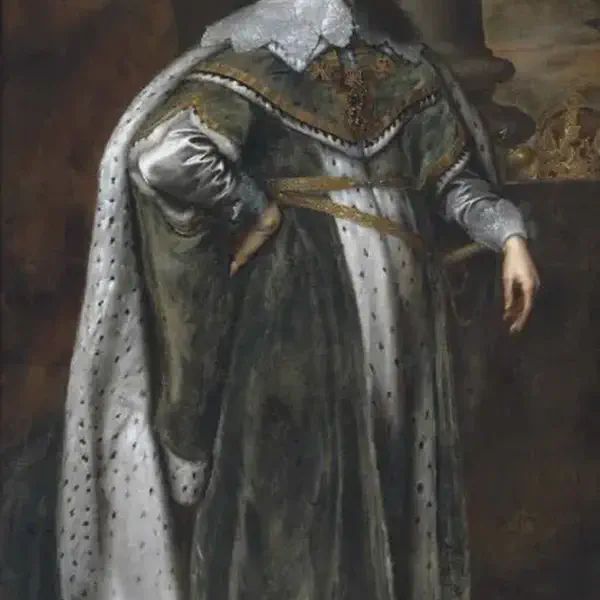
King Charles I, of England, Was Born
November 19, 1600
King Charles I of England was born on November 19, 1600. He was the second son of James I of England (James VI of Scotland) and Anne of Denmark. Charles I became King of England, Scotland, and Ireland in 1625, succeeding his father.
The birth of Charles I on November 19, 1600, was a pivotal moment in the history of the Stuart monarchy and the broader historical narrative of England during the 17th century.
King Charles I was King of England, Scotland and Ireland from 27 March 1625, until his execution. He famously engaged in a struggle for power with Parliament; he was an advocate of the divine right of kings. Many in England therefore feared that he was attempting to gain absolute power. There was widespread opposition to many of his actions, especially the levying of taxes without Parliaments consent. This is one of the many manifestations of popular discontent with an absolute monarchy.
Charles believed in a sacramental version of the Church of England, called High Anglicanism, with a theology based upon Arminianism, a belief shared by his main political advisor, Archbishop William Laud. Laud was appointed by Charles as the Archbishop of Canterbury in 1633 and started a series of reforms in the Church to make it more ceremonial, starting with the replacement of the wooden communion tables with stone altars. This was actively hostile to the Reformist tendencies of many of his English and Scottish subjects. His policy was obnoxious to Calvinist theology, and insisted that the Church of Englands liturgy be celebrated with all of the ceremony and vestments called for by the Book of Common Prayer. Many of his subjects thought these policies brought the Church of England too close to Roman Catholicism.
The last years of Charles’s reign were marked by the English Civil War; he was opposed by the forces of Parliament (which challenged his attempts to augment his own power) and by Puritans (who were hostile to his religious policies). The war ended in defeat for Charles, who was subsequently tried, convicted and executed for high treason. The monarchy was overthrown, and a republic was established. As time passed this regime became increasingly dependent upon the army and became in effect a military dictatorship. Various political as well as socio-economic factors led to its collapse. Charles’s son, Charles II, returned to restore the monarchy in 1660.
Personal Union
Charles I’s reign marked a period of personal union between the crowns of England and Scotland, as he was also King of Scotland from 1625.
Conflict with Parliament
Charles I faced ongoing conflicts with Parliament over issues such as taxation and the extent of royal authority. These tensions eventually led to the English Civil War.
Civil War
The English Civil War (1642–1651) was primarily a conflict between the King and Parliament over issues such as royal authority, taxation, and religious matters. The war resulted in a series of military campaigns and political struggles.
Defeat of the Royalists
Charles I was defeated by the Parliamentarian forces led by Oliver Cromwell. The final battle of the civil war, the Battle of Worcester, took place in 1651, resulting in the defeat of the Royalists.
After the defeat of the Royalists, Charles I was captured and brought to trial. The trial, held by the High Court of Justice, began in January 1649. Charles was charged with high treason against the people of England.
During the trial, Charles I refused to recognize the authority of the court and declined to enter a plea. He argued that no earthly court had jurisdiction over a monarch.
Despite Charles’s objections, the court found him guilty of the charges brought against him.
Execution
King Charles I of England was executed on January 30, 1649, following a trial by the High Court of Justice. King Charles I was executed by beheading in front of the Banqueting House in Whitehall, London. This event marked the only execution of an English monarch.
The execution of Charles I led to the establishment of the Commonwealth of England under Oliver Cromwell. The monarchy was abolished, and England became a republic. This period, known as the Interregnum, lasted until the Restoration of the monarchy in 1660 under Charles II, the son of Charles I.